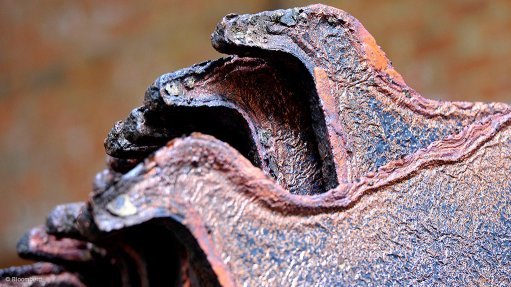
Photo by: Bloomberg
TORONTO (miningweekly.com) – Mining companies, in general, are adapting to a more austere fundamental backdrop, despite a recent announcement in Chinese media that the country would be removing stimulus and reprioritising reforms, which caused significant apprehension during Bank of America Merrill Lynch’s (BofAML’s) recent 2016 Global Metals, Mining and Steel Conference, in Florida,
In BofAML’s latest Global Research report, which reflected on its conference, analysts reported that, beyond Chinese concerns, the large-cap miners conveyed a message of cautious optimism going forward, partially because companies had been restructuring balance sheets and reducing debt.
The improvement in finances was accomplished by a range of measures, each of which had different implications for commodity fundamentals, including cost cuts which, especially when achieved through output increases, could be outright bearish; asset sales, which could be positive if they absorbed funds that purchasers would have otherwise used to explore and build new mine capacity; and refocused strategies on good assets, which could also support fundamentals, especially if mines were being shuttered.
DRIVING DEBT DOWN
BofAML stated that excessive debt levels had been a critical overhang to the miners in recent years, and the industry’s focus to be leaner had been reflected in several majors’ capital allocation frameworks, including Australia-based miners BHP Billiton and Glencore.
During its presentation, Glencore underlined that a reduction in debt levels was a priority. Similarly, Canadian diversified miner Teck Resources had stressed the importance of keeping debt in check and being able to service those liabilities, suggesting that the company’s liquidity and debt repayment profile were not major issues.
Meanwhile, miners had managed to reduce costs further still, an imperative for individual miners, BofAML analysts advised.
“However, the industrywide focus on reducing expenditures has led to falling and flatter cost curves. In essence, this has increased competitive pressures, as every company now needs to run faster just to stand still relative to the peers,” said the research report.
Glencore had suggested that the industry’s focus should really be on margins, adding that a reduction in costs was often facilitated by production increases, which created economies of scale, which was, in fact, counterproductive to rebalance the market and stabilise prices. Hence, it was not surprising that companies have implemented a range of other measures as well,” BofAML stated.
During the bull market of the past decade, the mining industry’s high debt levels were heavily influenced by a relentless investment in capacity. Given recent price declines and the pressure these have caused on balance sheets, miners were now reversing some of this investment.
ASSET SALES
During its presentation, Freeport-McMoRan CEO Richard Adkerson acknowledged that its debt was too high, advising that the company would aim at getting its debt level down to around $10-billion in the next two to three years, “if the market opens the door for us”.
To delever, the company recently announced the sale of its 56% interest in Tenke Fungurume (TF), in the Democratic Republic of Congo (DRC) for $2.65-billion, one of the industry’s largest deals in years.
BofAML noted in its report that, under closer scrutiny of the transaction, Freeport noted that the mine was a great asset and they actually did not want to sell it. “This picks up on the balancing act many miners face at present: on the one hand, producers have to be more fiscally prudent, while on the other hand, it is important to maintain a portfolio of high-quality assets.”
Other companies were also choosing a similar strategy.
Canadian base metals miner First Quantum Minerals also discussed its path to “redemption”, which included an equity raise, derisking of its Cobre de Panama project, in Panama, its ramp-up of Sentinel, in Zambia and, notably, the sale of its Kevitsa mine, in Finland for $712-million.
Brazilian iron-ore giant Vale had also stated that the company remained focused on streamlining its balance sheet and is looking to raise $15-billion through asset sales and divestments.
Anglo American had stated that it was targeting $3-billion to $4-billion in asset sales this year, with a focus on metallurgical coal and nickel. Touching on the quality of its mine portfolio, the company believed that 30 of its 68 assets did not make a real contribution as a result of commodity price weakness and, as such, Anglo had sped up the sales process, which was originally expected to take between three and five years.
BofAML advised that mine closures were perhaps the quickest way to remove surpluses. “Nevertheless, disposing of unwanted assets is also important as these transactions absorb funds that competitors may otherwise have invested in new facilities,” analysts stated.
HIGH-QUALITY FOCUS
According to analysts, many miners that had boosted investment in mines during the past decade had predicated an immense rise in profitability and expected that Chinese demand would continue to grow. Unfortunately, many of these mines were not the best assets.
Influenced by the more austere fundamental backdrop, miners were now refocusing on low-cost, high-quality assets where they could. This was mirrored by comments from Vale during the conference, which said that its Vale Nova Caledonia operations remained an issue and were burning close to $100-million a quarter. “This seems not sustainable and Vale is now expecting to present a solution on the issue to the board by June,” BofAML analysts advised.